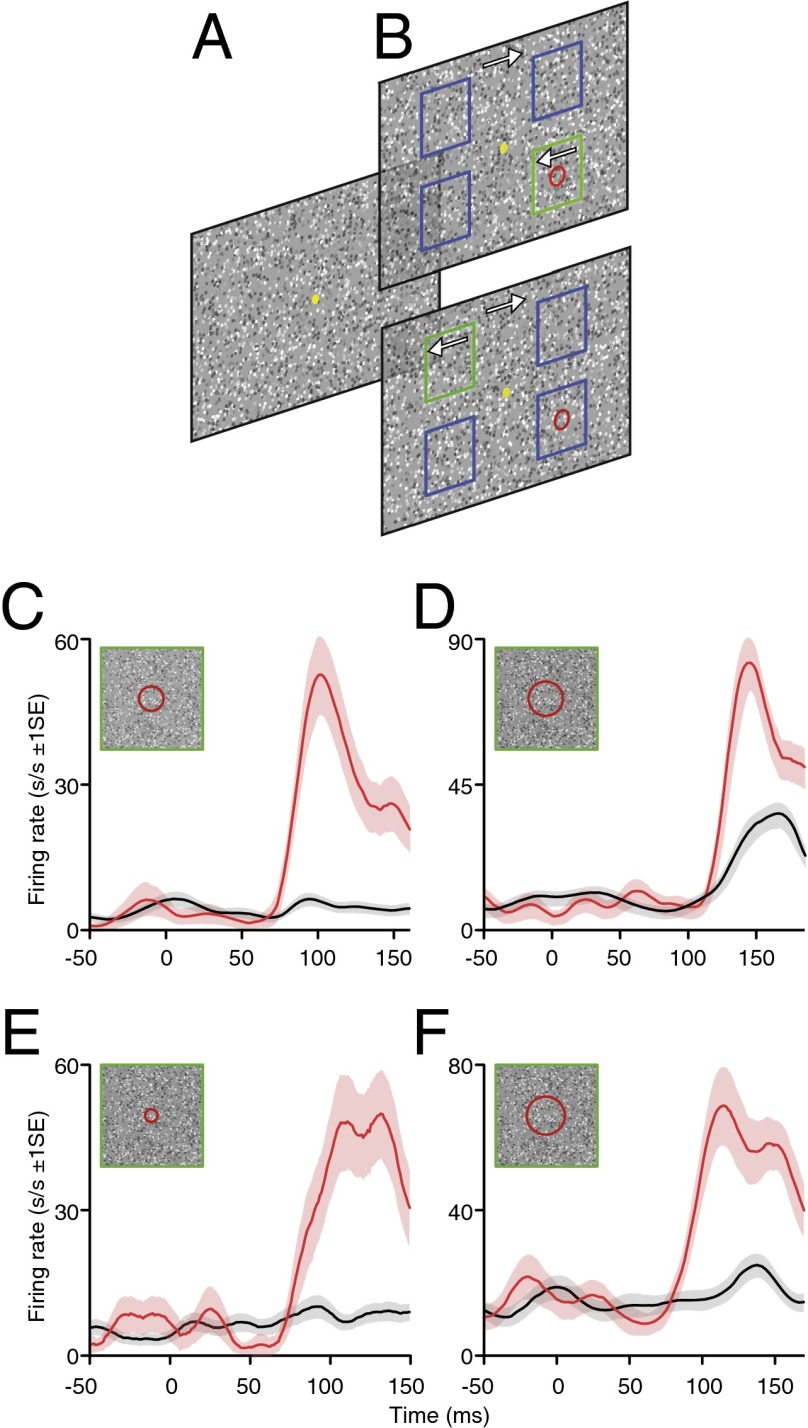Fig. 1.
Enhancement of neuronal firing when the figure, as opposed to the ground component of the stimulus, was located over the RF. (A and B) Schematic depiction (not to scale) of the stimulus and behavioral paradigm. The full-screen random dot display was initially static, with a central, yellow fixation spot (A). After a minimum fixation period of 400 ms, motion was initiated. A single square figure, delineated solely by its opposite direction of dot motion, was visible at one of four possible locations (indicated here by green/blue squares) either centered over the RF (depicted by the red circle), as shown in the upper panel or at an alternative location as shown in the lower panel (B). Monkeys were rewarded for making a saccade (within 500 ms of motion onset) to the center of the figure target. (C–F) Responses of four example LGN neurons. Spike density functions (SDF) to ground (black) and figure (red) stimulus conditions (±1 SE). Inset schematics show the size of the RF relative to the figure size. Time epoch commences 50ms before stimulus motion onset and ends before saccade initiation. See also Fig. S1.

